Recent Articles
Popular Makes
Body Types
2021 Nissan Kicks vs. 2022 Kia Soul
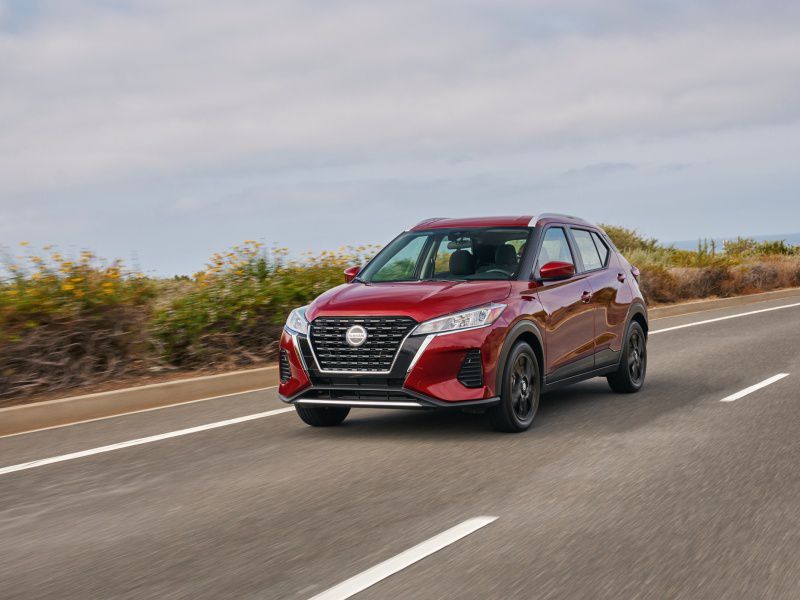
2021 Nissan Kicks ・ Photo by Nissan
With car prices soaring, you may consider it impossible to find a good sedan for under $20,000, much less a good crossover. Today, we’re comparing two models that prove you wrong.
The newly updated 2021 Nissan Kicks starts at $19,550, and the 2022 Kia Soul comes in even less at $19,190. These are light-duty subcompact crossovers: They’re small and sold only with front-wheel drive. Still, both pack in more space than you might expect and are packed with modern technology. Keep reading to learn whether one of these affordable little crossovers could be big enough for you, and — if so — which one. We’ve tested both vehicles so we can compare them in eight different categories and then name our own overall winner.
Pricing and Features
We mentioned that the Soul and Kicks have similar base prices: $19,150 for the Soul LX and $19,550 for the Kicks S. But Nissan provides safety features that Kia charges $900 extra for on the LX.
At the heart of the lineup, the Soul is more obviously the better deal. The $21,490 Soul S trim level also adds the advanced safety features, along with a jumbo 10.25-inch touchscreen, a navigation system, a wireless smartphone charger, automatic climate control, a 10-way power driver’s seat, and push-button starting. The midlevel Kicks SV has a similar $21,350 price tag but a lot less equipment. And you can’t get any Kicks with several Soul features: the power seat, navigation, or a sunroof. That’s why we’ll award this category narrowly to Kia. On the other hand, the Nissan is the only one with full leatherette upholstery (included at a reasonable $23,340 as an option on the top SR trim level), and it makes adaptive cruise control widely available while it’s limited to the highest Soul trim level. If those are features you care more about, the Kicks could win for you instead.
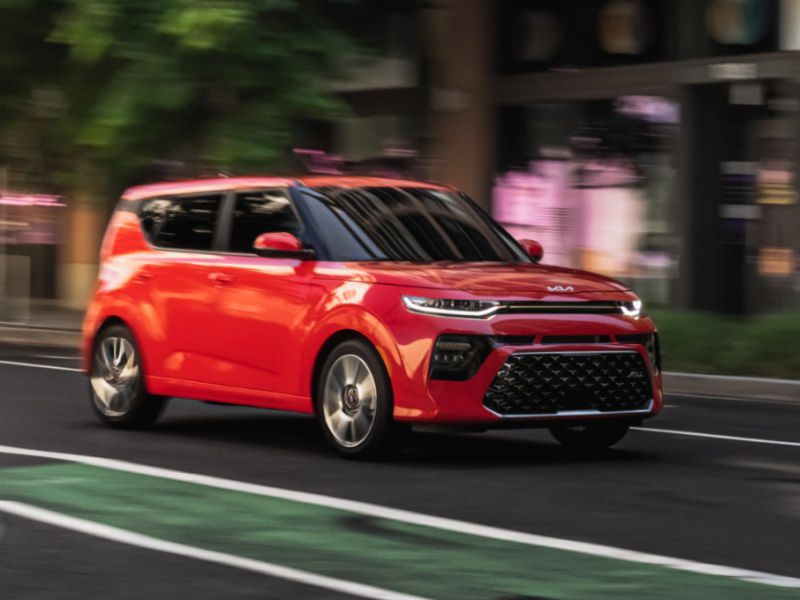
Photo by Kia
Exterior Design
The Soul helped originate this market segment of funky-looking small crossovers, and the design has matured over the years. The current Soul appeared for the 2020 model year, and it’s wider than the original model — giving it a more confident-looking, planted stance. The straight-vertical rear end is now dressed up with taillights that wrap around the big windshield. Overall, this is a rounded-off box with clean, simple lines.
In contrast, the Kicks is curvier and more aggressive, particularly after a fresh update for 2021. Its new headlights are like spears alongside a big grille that dips to the ground. And the rear leans forward cheekily, accentuated by an upward kick in the windowline. We’ll let you choose your own winner between these two design approaches.
Tie
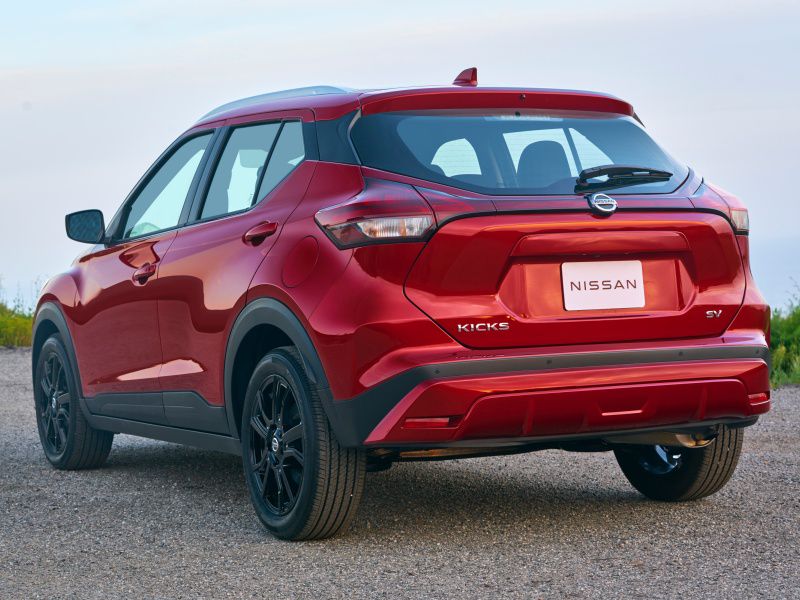
Photo by Nissan
Interior Design
Starting with the 2022 model year, most Souls’ dashboards are dominated by a big 10.25-inch touchscreen infotainment system — previously available only on high-end trim levels. The base LX also upgrades from last year’s 7-inch screen to an 8-inch one, and all support Android Auto and Apple CarPlay smartphone integration. Rather than perching atop the dash like many cars, this wide strip of screen sits in the middle of an oval instrument panel. The cabin is solidly constructed, feeling sturdy if not fancy or flashy.
The Kicks has a choice of 7-inch and 8-inch touchscreens, also incorporated into the dashboard and also including Android Auto and Apple CarPlay. Both cars have easy-to-use controls, and neither feels like cheap junk. The Nissan has more soft-touch dashboard materials than the Kia, but we’ll award this category to the Soul for its bigger infotainment screen.
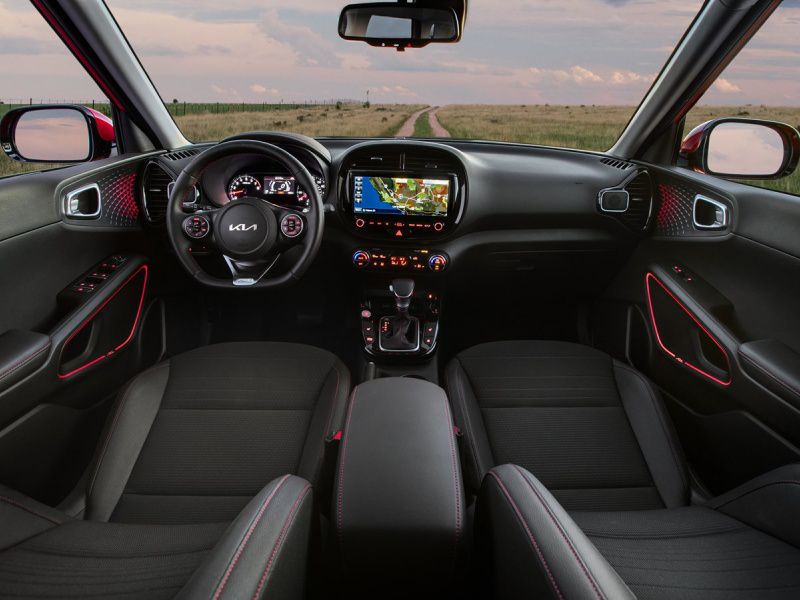
Photo by Kia
Passenger Accommodations
Both the Soul and the Kicks are uncommonly roomy for their size, and the seats are well-shaped and supportive rather than thin and insubstantial like some cheap cars. You can also fit two adults in each rear seat (three abreast fit in a tight squeeze), where these little crossovers’ high roofs mean you can sit up high without giving up headroom.
The Soul comes out ahead for two reasons. First, it has more rear legroom, making it even easier to carry people in the backseat. Secondly, most Soul trim levels have a 10-way power-adjustable driver’s seat, while the Kicks has just six-way manual adjustments. As we mentioned, only the Kicks has leatherette available, but the Soul otherwise wins.
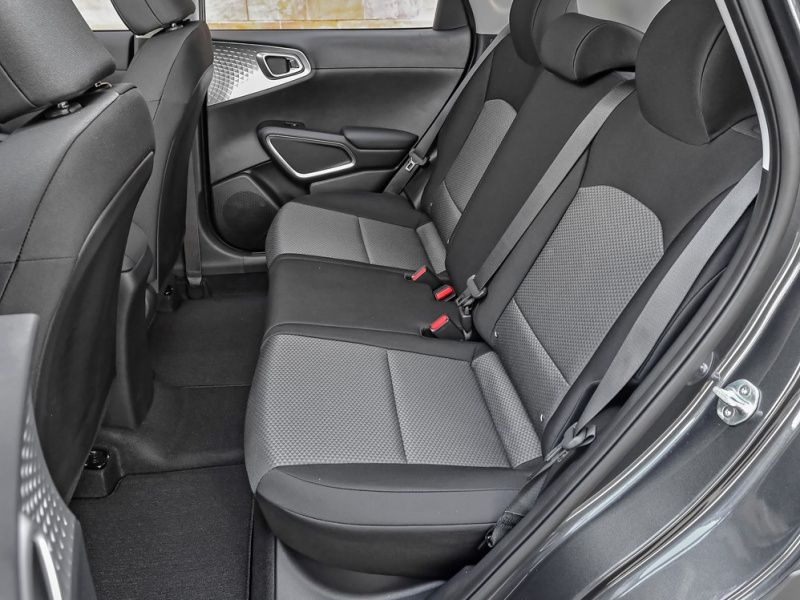
Photo by Kia
Cargo and Utility
When it comes to cargo, the boxier Kia wins over the slightly larger Nissan. Since it’s longer and gives up a bit of rear legroom, the Kicks does have a bit more cargo space behind the rear seat: 25.2 cubic feet versus the Soul’s 24.2 cubic feet. But the Soul wins big once you fold down the rear seat.
First, the Kia’s volume advantage is substantial: 62 cubic feet versus 53 cubic feet. Secondly, it’s easy to drop down the Soul’s rear seat, while the Kicks may force you to remove the rear head restraints or slide the front seats forward. What’s more, the Soul has an adjustable-height cargo floor that lets you either maximize cargo room or create a flush surface when the seats are folded; the Kicks always leaves a ledge from the floor to the top of the folded seatbacks.
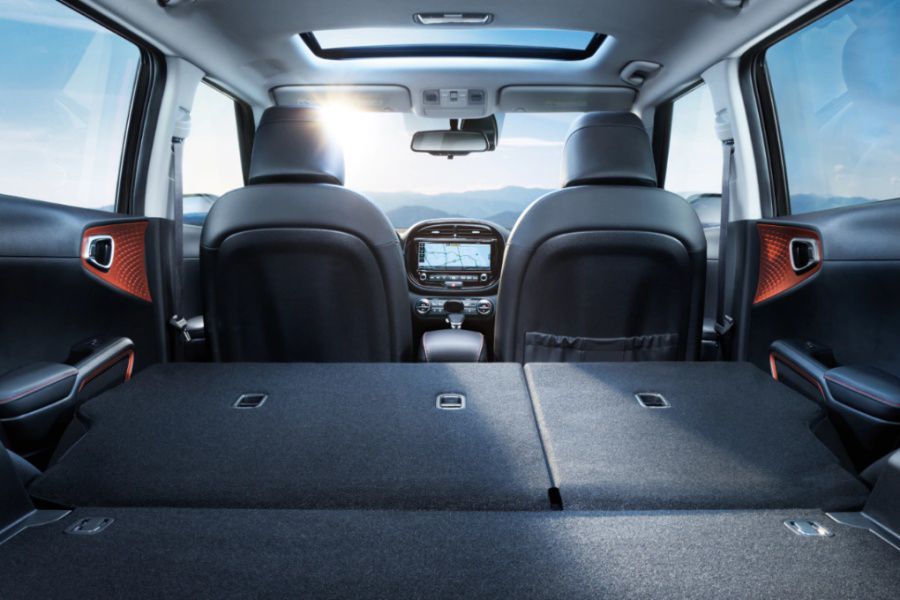
Photo by Kia
Driving Impressions
The Soul drives like an ordinary compact economy car — and that’s a compliment. It’s smooth, agile, and solid-feeling, and its standard 147-horsepower four-cylinder engine is decently peppy. These are all mechanical pieces it borrows from the Kia Forte and Hyundai Elantra. It also shares their upper-trim engine: a 201-horsepower turbo that makes this little box fly, though we wish the turbo’s transmission would shift more smoothly.
The Kicks, meanwhile, is based on a subcompact sedan rather than a compact: the Nissan Versa. That includes its 122-horsepower engine, which feels peppy at low speeds but is noisier and runs out of steam faster than the Soul’s base engine — to say nothing of its turbo. The Kicks’ ride and handling isn’t as settled as the Soul’s at high speeds, but it’s still generally comfortable and agile, too. Despite the Soul’s bigger-car feel, it even comes close to the Kicks’ extra-tight turning radius: 34.8 feet versus 34.1 feet.
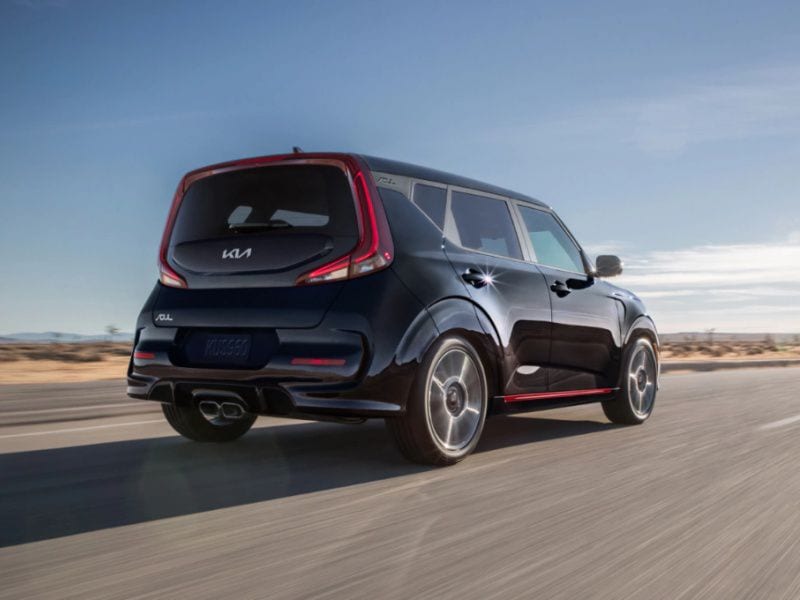
Photo by Kia
Fuel Economy
The Kicks’ little engine pays dividends at the gas pump. It achieves an EPA-estimated 31 mpg in the city, 36 mpg on the highway, and 33 mpg combined. That’s better than any other SUV except for hybrids and electric vehicles — and even some of the former use more gas than the Kicks. And that compares with 28 mpg city, 33 mpg highway, and 30 mpg combined on most Soul trim levels, including our test vehicle; the EX model has some efficiency tweaks that push mileage to 31 mpg combined, while the turbo falls to 29 mpg combined.
In our testing, the Kicks averaged 35 mpg in mixed driving; it fell below that average on the open freeway, though, where many cars are at peak efficiency but where the Kicks’ little engine has to work extra hard to keep moving. We averaged 32 mpg in the Soul.
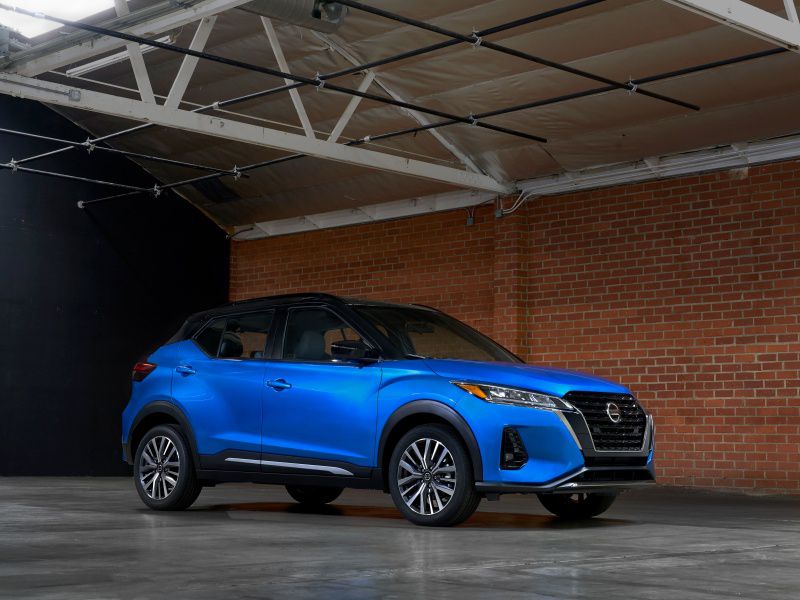
Photo by Nissan
Safety
Every Kicks comes packed with advanced safety technology: front and rear automatic emergency braking, front pedestrian-detection capability, a lane-departure warning, a blind-spot monitoring system with a rear cross-traffic alert, and rear parking sensors. No other vehicle, SUV or otherwise, is so generous below $20,000. Adaptive cruise control is newly standard on all but the base Kicks, and a useful surround-view parking camera is included on the top SR.
The Soul’s safety equipment just improved this year, but it continues to lag the Kicks. The base Soul LX charges $900 for an options package that includes forward automatic emergency braking, lane-keeping assistance, and blind-spot monitoring with a cross-traffic alert (along with alloy wheels). These features are standard on other trim levels, but you need the top Turbo model to get adaptive cruise control or pedestrian detection, and rear automatic braking isn’t available at all. The Soul did slightly better in National Highway Traffic Safety Administration frontal-impact crash testing, but both vehicles earned a middling four out of five stars overall; both crossovers did better in Insurance Institute for Highway Safety tests.
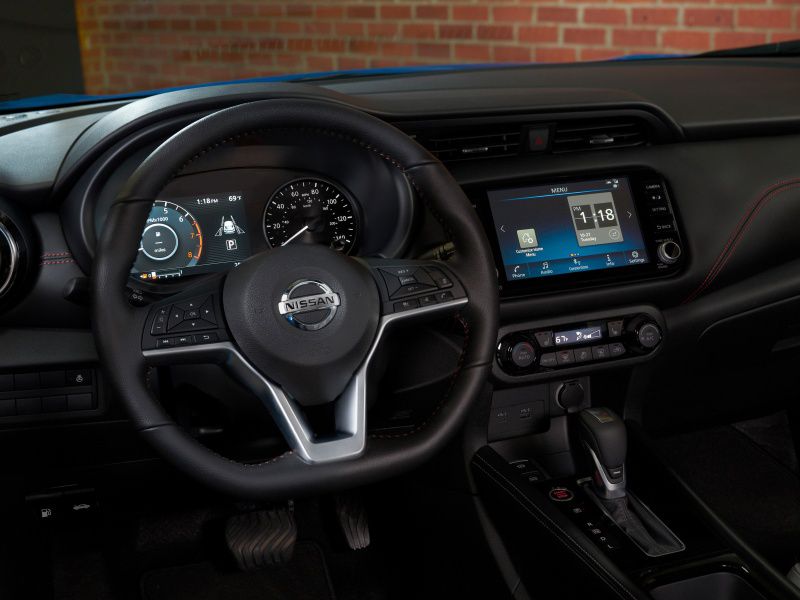
Photo by Nissan
Final Thoughts
Nissan has significantly upgraded the 2021 Kicks, giving it spicier styling, an upgraded interior, and more safety features. And it retains a great combination of affordability, fuel efficiency, and interior space.
Still, our pick is the 2022 Kia Soul. It feels like the bigger, more expensive vehicle — even though it’s not. It’s quicker, quieter, roomier, smoother, and available with more features, all at similar prices to the Kicks. We don’t mean you’ll mistake the Soul for a luxury car or a truly big SUV, but this is a thoroughly competent vehicle with plenty of space at a great price. Buy the Kicks if the most safety gear or the best gas mileage is a top priority, but overall, our choice is the Soul.
Kia Soul
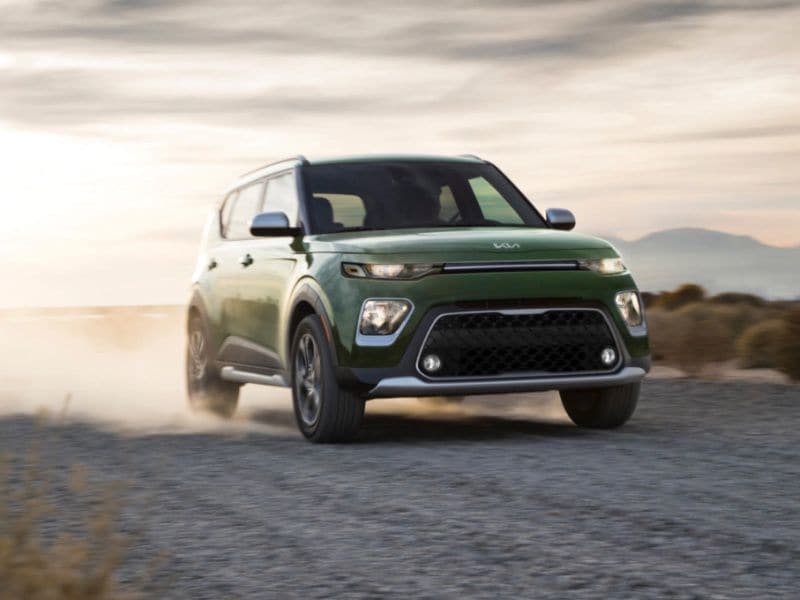
Photo by Kia